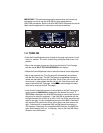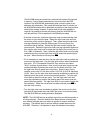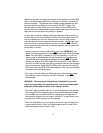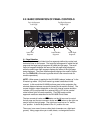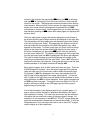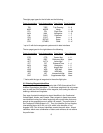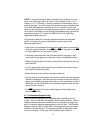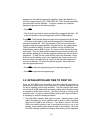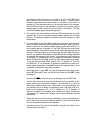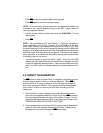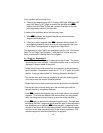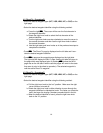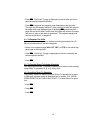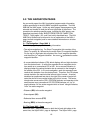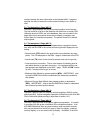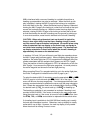
the almanac data will become out of date only if the KLN 90B hasn’t
been used for the previous six months or longer. Collecting new
almanac data takes place automatically if the data is more than six
months old. If the almanac data is out of date and needs to be collected,
the KLN 90B will take a few minutes to acquire your present position
(usually about six (6) minutes, but not more than 12 minutes). The Self
Test and Database pages should be approved.
2. The aircraft must be located such that the GPS antenna has an unob-
structed view of the sky so that required satellite signals are not being
blocked. If necessary, position the aircraft away from hangars or other
obstructions.
3. It is very helpful for the KLN 90B to have the correct time, date and posi-
tion to be able to determine which satellites should be in view. This infor-
mation is stored in the battery backed memory of the KLN 90B so it is
not normally required to update it. If the KLN 90B has the correct time,
date and position, then the time to first fix will usually be less than two (2)
minutes. If this information is not correct, then the KLN 90B will start to
look for any satellites. Eventually, the KLN 90B will find enough satellites
to determine the position of the aircraft. This process can take as long as
12 minutes. It is possible for you to update this information manually
which will allow the KLN 90B to reach a NAV ready status much faster.
To set the time and date follow steps 6 and 7 in section 3.2, “Turn-On
and Self-Test.” If it is necessary to update the position then use the fol-
lowing steps. Remember, if acquisition time is not important then it is not
necessary to update the time, date or position.
• Select the Setup 1 page (SET 1) by first turning the left outer knob to dis-
play a SET type page. Next, turn the left inner knob until the SET 1 page
is selected.
• Press the left C to bring the cursor on the page over the WPT field .
• Use the left inner knob to enter the first character of the identifier for the
airport where you are presently located or the identifier of a navaid or
other airport which is close to you. Remember, if you are entering an air-
port identifier that is all letters (no numbers), then it will begin with a “K”
prefix in the Contiguous U.S., a “P” in Alaska, or a “C” in Canada. If
there are numbers in the identifier then a prefix is not used. Outside the
Contiguous U.S., Alaska, and Canada, use the airport identifiers as they
are charted.
• Rotate the left outer knob one step clockwise to move the flashing por-
tion of the cursor to the second position and then use the left inner knob
to enter the second character of the identifier.
• Complete entering the rest of the identifier using the left knobs in the
same manner as in step 4.
11



